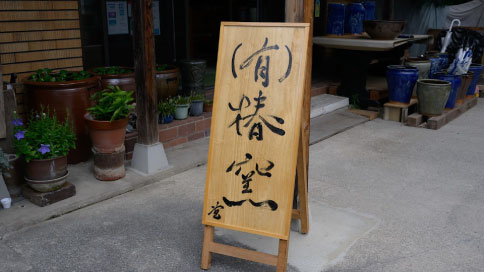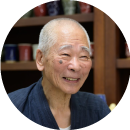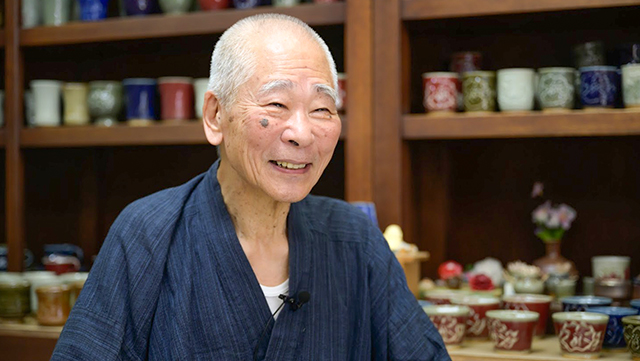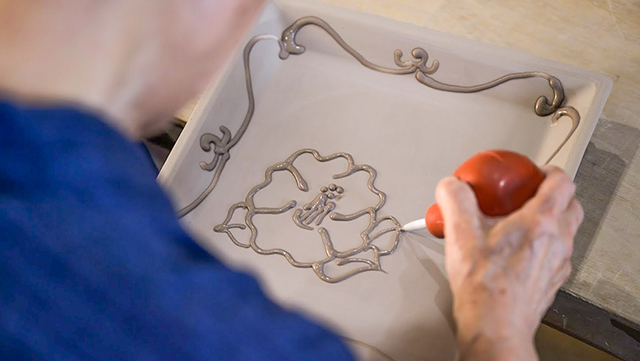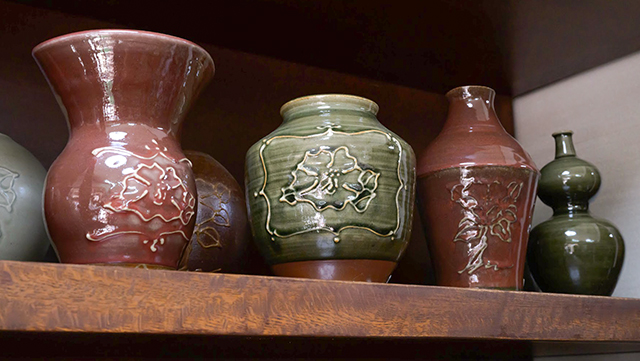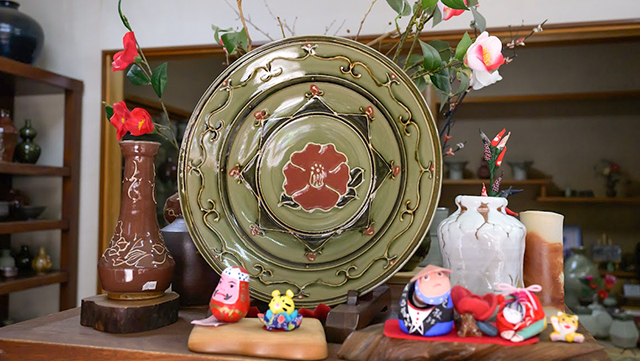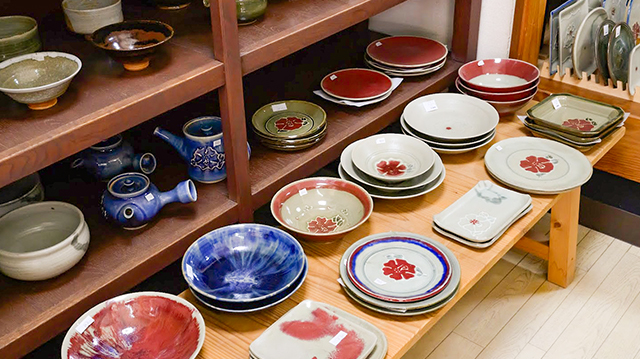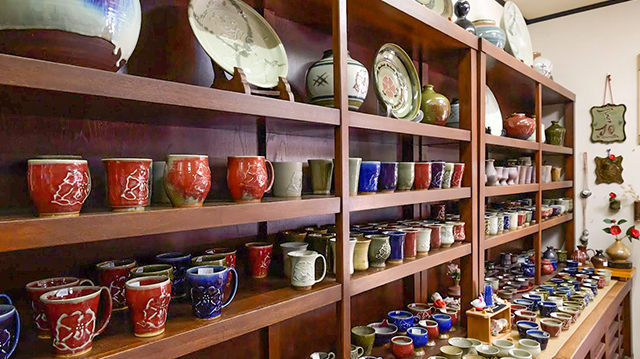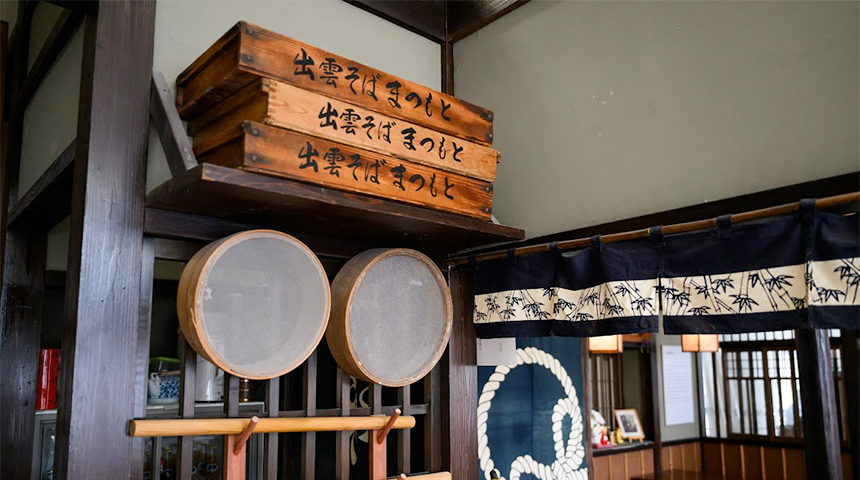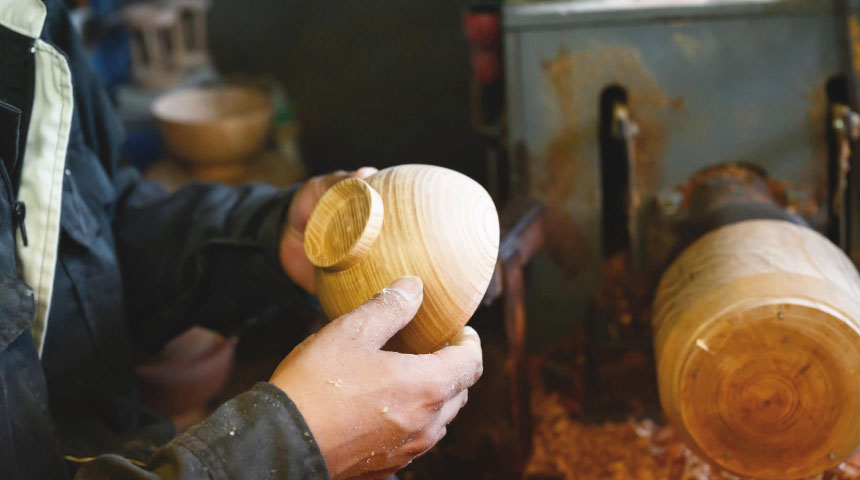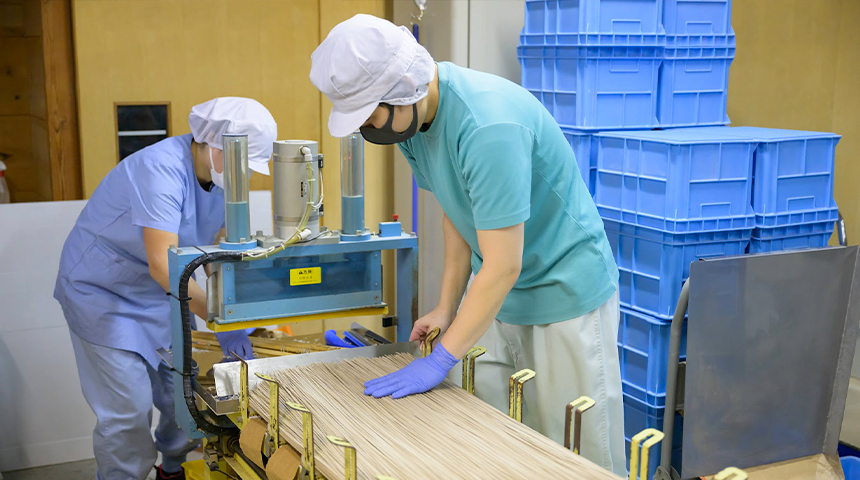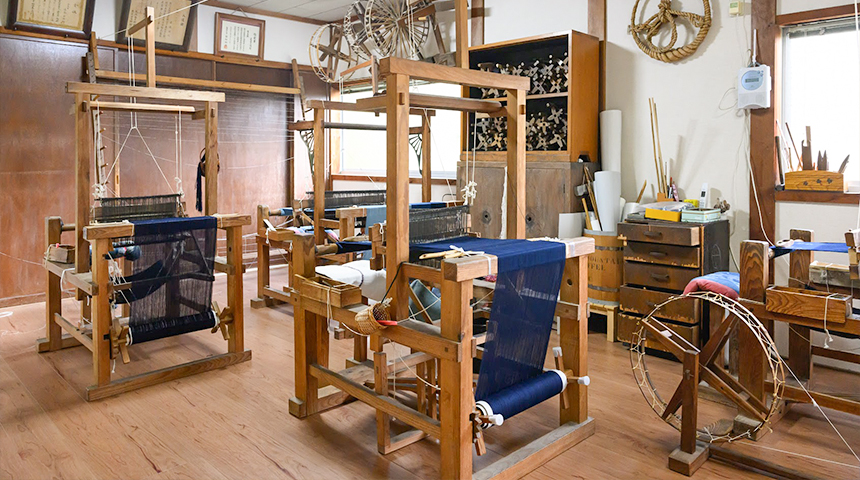The workshop, surrounded by camellia flowers is close enough to feel the sea breeze, produces ceramics brought to life by the gentle hands of the master. These potteries are fired in a magnificent 10-stage climbing kiln (said to be the largest in Japan) and gas kiln.
By using the secret technique of Mr. Kanjiro Kawai, a challenging vermilion ‘cinnabar’ is formulated in ceramic. The beautiful pattern of camellia design colored with cinnabar becomes their unique symbol. The works crafted by a father and his two sons using two types of kilns, show their interesting individuality in hues and patterns.
We interviewed Mr. Arao of Tsubakigama LLC in Yunotsu, located in the center of Shimane prefecture.
The Charms of Tsubakigama and the kiln’s history.
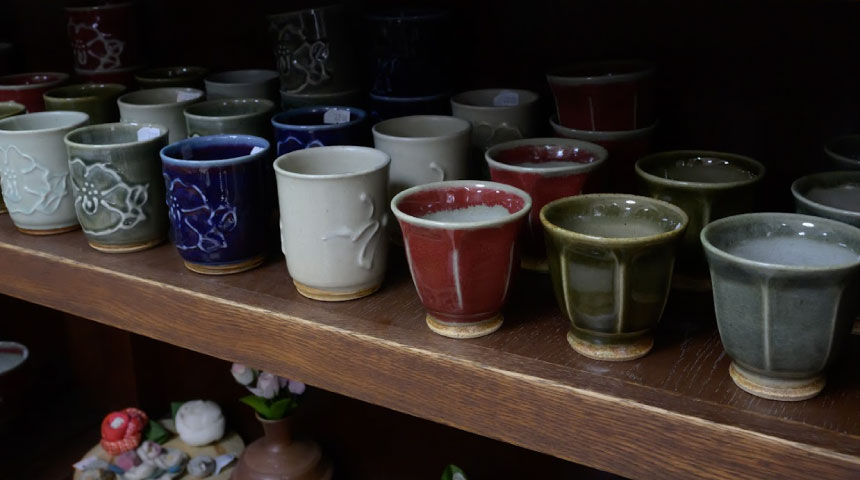
- What are the charms of Tsubakigama?
-
Tsubakigama specializes in ceramics featuring camellias, created using three colors of glaze discovered by Mr. Kanjiro Kawai: "Gosu (Zaffer)," "Shinsha (Cinnabar)," and "Seiji (Celadon)”. These glazes cannot be replicated elsewhere, making them unique only to our kiln.
- How long is the history of Tsubakigama?
-
My father used to run a pottery company in Kyoto.
Among the old glazed formula table I found in our house, there was a 300-year-old document. So, I think we've been running a pottery company for 300 years.
There happened to be the house of Mr Kanjiro Kawai just a stone's throw away from my house. And I have been visiting his kiln since I was six or seven years old, Mr Kawai taught me a lot of things.
So, from my childhood, I have been punching (touching) the clay.
My father learned how to prepare glazes directly from Mr Kanjiro Kawai, so I still inherit that from him.
Techniques passed on from Kyoto to Shimane.
- Tell us how your potteries are created and how unique they are.
-
I draw the camellia and other patterns using a decorative technique called Itchin (slip-trailed decoration)
Since the time of my father, we have had a deep love for camellias, creating this design with the wish that happiness would spread in people’s heart.
Itchin is a technique that expresses raised line patterns with Deisho (slurry / melted clay) and glazes. Some suggest that the name comes from the Itchin Paste used for Yuzen dyeing. In old days, they could not draw fine patterns like us because they were using bamboo and Tsutsugaki technique (drawing with piping bag made of tanned paper). We now can draw fine designs ever since started using droppers.
We make plates and cups from clay and draw designs such as camellias on them. I have drawn countless camellias.
Each work is carefully hand-drawn; so, each piece is unique and different.
- Do you have any special attachment to your yunomi, Japanese-style teacups?
-
We maintain the same chamfering ever since our kiln was in Kyoto; so, I hope it continues to be cherished it. Regarding the formation of rims of the teacups, we been researching and crafting to ensure it is easy to drink and has a pleasant feel; so, you would enjoy the same sake but taste better in our teacups. I have also fired teacups using clay treated in special water, creating a smoother teste of the sake. This is something that you will not find elsewhere.
- What are your views on the passing on the techniques?
-
My sons have been playing and freely experimenting with clay at the workshop since they were little. Therefore, I have not taught them anything special to succeed or carry on. By just watching my way of life as it is, they should be able to inherit everything naturally. I have nothing more to teach them.
So, I'm looking forward to seeing what new things my sons will create based on what we've done. They seem to be actively participating in various events and making creative contributions.
Products
Overview
- Tsubakigama LLC
- i-12-2 Yunotsu, Yunotsu-cho, Oda, Shimane 699-2501
- Phone : 0855-65-2022
- Fax : 0855-65-3135
- E-Mail : yu.tsubakigama.inc@gmail.com
- Facebook : https://www.facebook.com/tsubakigama/
